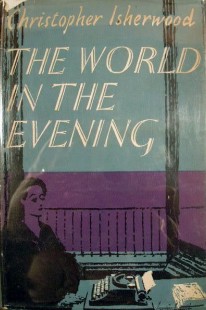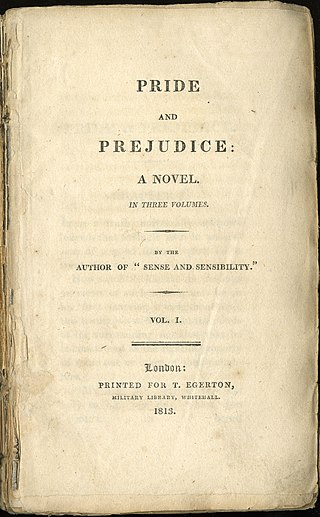
Pride and Prejudice is the second novel by English author Jane Austen, published in 1813. A novel of manners, it follows the character development of Elizabeth Bennet, the protagonist of the book, who learns about the repercussions of hasty judgments and comes to appreciate the difference between superficial goodness and actual goodness.

Jane Eyre is a novel by the English writer Charlotte Brontë. It was published under her pen name "Currer Bell" on 19 October 1847 by Smith, Elder & Co. of London. The first American edition was published the following year by Harper & Brothers of New York. Jane Eyre is a bildungsroman that follows the experiences of its eponymous heroine, including her growth to adulthood and her love for Mr Rochester, the brooding master of Thornfield Hall.

Emma is a novel written by English author Jane Austen. It is set in the fictional country village of Highbury and the surrounding estates of Hartfield, Randalls and Donwell Abbey, and involves the relationships among people from a small number of families. The novel was first published in December 1815, although the title page is dated 1816. As in her other novels, Austen explores the concerns and difficulties of genteel women living in Georgian–Regency England. Emma is a comedy of manners.
Camp is an aesthetic style and sensibility that regards something as appealing because of its bad taste and ironic value. Camp aesthetics disrupt many of modernism's notions of what art is and what can be classified as high art by inverting aesthetic attributes such as beauty, value, and taste through an invitation of a different kind of apprehension and consumption.

Christopher William Bradshaw Isherwood was an Anglo-American novelist, playwright, screenwriter, autobiographer, and diarist. His best-known works include Goodbye to Berlin (1939), a semi-autobiographical novel which inspired the musical Cabaret (1966); A Single Man (1964), adapted as a film by Tom Ford in 2009; and Christopher and His Kind (1976), a memoir which "carried him into the heart of the Gay Liberation movement".

Armistead Jones Maupin, Jr. is an American writer notable for Tales of the City, a series of novels set in San Francisco.

Villette is an 1853 novel written by English author Charlotte Brontë. After an unspecified family disaster, the protagonist Lucy Snowe travels from her native England to the fictional Continental city of Villette to teach at a girls' school, where she is drawn into adventure and romance.

"Notes on 'Camp'" is a 1964 essay by Susan Sontag that brought the aesthetic sensibility known as "camp" to mainstream consciousness.
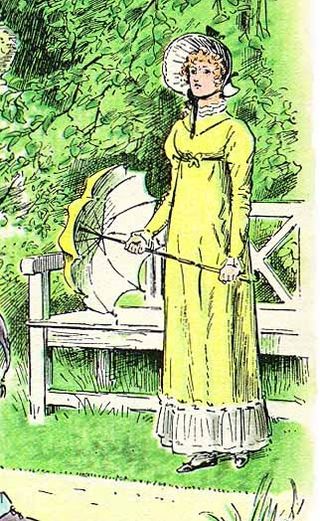
Elizabeth Bennet is the protagonist in the 1813 novel Pride and Prejudice by Jane Austen. She is often referred to as Eliza or Lizzy by her friends and family. Elizabeth is the second child in a family of five daughters. Though the circumstances of the time and environment push her to seek a marriage of convenience for economic security, Elizabeth wishes to marry for love.

Goodbye to Berlin is a 1939 novel by Anglo-American writer Christopher Isherwood set during the waning days of the Weimar Republic. The novel recounts Isherwood's 1929–1932 sojourn as a pleasure-seeking British expatriate on the eve of Adolf Hitler's ascension as Chancellor of Germany and consists of a "series of sketches of disintegrating Berlin, its slums and nightclubs and comfortable villas, its odd maladapted types and its complacent burghers." The plot was based on factual events in Isherwood's life, and the novel's characters were based upon actual persons. The insouciant flapper Sally Bowles was based on teenage cabaret singer Jean Ross who became Isherwood's friend during his sojourn.
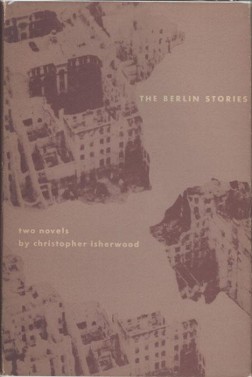
The Berlin Stories is a 1945 omnibus by Anglo-American writer Christopher Isherwood and consisting of the novels Mr Norris Changes Trains (1935) and Goodbye to Berlin (1939). The two novels are set in Jazz Age Berlin between 1930 and 1933 on the cusp of Adolf Hitler's ascent to power. Berlin is portrayed by Isherwood during this chaotic interwar period as a carnival of debauchery and despair inhabited by desperate people who are unaware of the national catastrophe that awaits them.
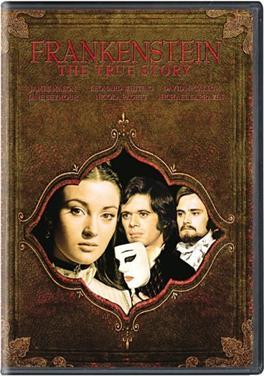
Frankenstein: The True Story is a 1973 British made-for-television film loosely based on the 1818 novel Frankenstein; or, The Modern Prometheus by Mary Shelley. It was directed by Jack Smight, and the screenplay was written by novelist Christopher Isherwood and his longtime partner Don Bachardy.

Frankenstein's Aunt is the protagonist of three novels - two by Allan Rune Pettersson and a seven-episode TV miniseries based on the first one. The story is a humorous homage to the Universal Horror Frankenstein films.
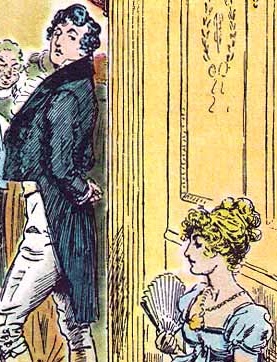
Fitzwilliam Darcy Esquire, generally referred to as Mr. Darcy, is one of the two central characters in Jane Austen's 1813 novel Pride and Prejudice. He is an archetype of the aloof romantic hero, and a romantic interest of Elizabeth Bennet, the novel's protagonist. The story's narration is almost exclusively from Elizabeth's perspective; the reader is given a one-sided view of Darcy for much of the novel, but hints are given throughout that there is much more to his character than meets the eye. The reader gets a healthy dose of dramatic irony as Elizabeth continually censures Mr. Darcy's character despite the aforementioned hints that Mr. Darcy is really a noble character at heart, albeit somewhat prideful. Usually referred to only as "Mr. Darcy" or "Darcy" by characters and the narrator, his first name is mentioned twice in the novel.

Prater Violet (1945) is Christopher Isherwood's fictional first person account of film-making. The Prater is a large park and amusement park in Vienna, a city important to characters in the novel for several reasons. Though Isherwood broke onto the literary scene as a novelist, he eventually worked in Hollywood as a screenwriter. In this novel, Isherwood comments on life, art, commercialization of art and Nazism.

Down There on a Visit is a novel written by the Anglo-American author Christopher Isherwood and published in 1962. The title refers to a jibe fired at Isherwood's protagonist by another character, Paul: "You know, you really are a tourist, to your bones," laughs Paul. "I bet you're always sending post cards with 'Down here on a visit' on them. That's the story of your life."
Fitzwilliam Darcy, Gentleman is the collective name given to a trilogy of historical romance novels written by Pamela Aidan. As the title suggests, they are based heavily on Jane Austen's 1813 novel Pride and Prejudice, and feature many events of the novel as seen from the perspective of Mr. Fitzwilliam Darcy, the central male character of Austen's novel.

These Three Remain is a 2005 historical romance novel by Pamela Aidan. It is the third and final novel in the Fitzwilliam Darcy, Gentleman trilogy, a series of novels examining Jane Austen's 1813 novel Pride and Prejudice from the perspective of Fitzwilliam Darcy, the central male character of that book.
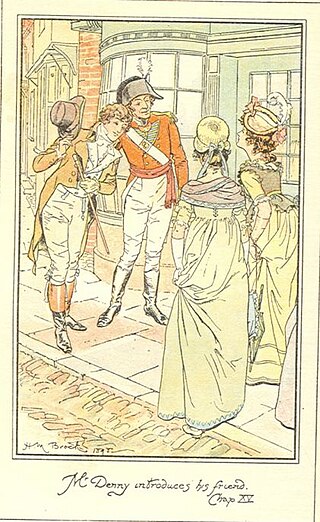
George Wickham is a fictional character created by Jane Austen who appears in her 1813 novel Pride and Prejudice. George Wickham is introduced as a militia officer who has a shared history with Mr. Darcy. Wickham's charming demeanour and his story of being badly treated by Darcy attracts the sympathy of the heroine, Elizabeth Bennet, to the point that she is warned by her aunt not to fall in love and marry him. It is revealed through the course of the story that George Wickham's true nature is that of a manipulative unprincipled layabout, a ne'er-do-well wastrel, compulsive liar and a degenerate, compulsive gambler, a seducer and a libertine, living the lifestyle of a rake. Lacking the finances to pay for his lifestyle, he gambles regularly and cons credit from tradesmen and shopkeepers and skips out on paying-up.
